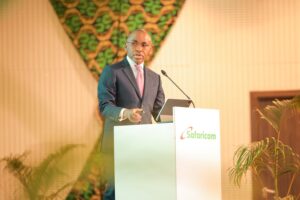Paul Burrin: Five Misconceptions About Motivating Employees

[IMAGE/ COURTESY]
The start of a new year presents an opportunity to refocus our efforts on motivating employees and fostering an engaging, rewarding work environment.
HR and People teams and company leadership can set the tone for a productive 2019 with the right strategy in place – provided they don’t fall into the habit of common misconceptions about how to best encourage productivity in the workplace.
Companies that understand what motivates employees are sure to have a productive year. Here are the most common productivity myths and how to deliver on what employees really care about.
Myth #1: Employees want cool perks like ping pong tables or team outings
According to our latest research, ‘Why your workforce isn’t working’, only five percent of employees say they value benefits such as office games (ping pong tables) or team outings. This despite the fact that 40 percent of companies believe office games are important to employees. In fact, more than half of respondents said they found office games to be an ongoing distraction.
Ultimately, employees don’t value gimmicks as much as their employers think. Instead of springing for a new ping pong or pool table, invest time in ensuring employees feel valued and recognised for their hard work.
Myth #2: Just saying ‘thank you’ is enough to show employees you appreciate their work
Saying ‘thank you’ is a great start, but 66 percent of employees we polled want to feel more valued and receive recognition for their work. They want to feel their company values the contribution they’re making to the business.
Read: How You Can Seamlessly Manage Family Business
Go beyond ‘thank you’ by creating a system for rewarding and recognising good work. Whether it’s sending out a quarterly email to employees highlighting great performance or scheduling a monthly review session with management, it’s important to ensure your team feels appreciated and receives regular feedback.
Myth #3: Flexible work schedules and remote work distracts employees and harms productivity
Some companies may be hesitant to initiate flexible hours or work-from-home policies, but 81 percent of employees we spoke to say this kind of flexibility is vital. They want to work in an environment that is best for them, which will inevitably boost productivity.
Why shouldn’t employees work from 7am and finish earlier if they’re more productive in the mornings? Why should parents have to miss the school run just to be seen to be in the office, when they may be working long evenings too?
Consider giving employees the freedom to create their own hours and work remotely, especially early in the year when morale tends to dip.
Myth #4: Wellness is only top-of-mind for employees in January
It’s likely your employees will return from holidays with wellness goals—both mental and physical. You should be prepared to support these initiatives year-round.
39 percent of employees we polled said they believe HR and People teams could do more to improve wellness at work. Although the start of the year is a great time to begin, if it’s not continued throughout the year, then it can seem like an empty gesture from employers.
Whether it’s offering subsidised gym membership, providing free fruit, ensuring there is mental health support in place, or demonstrating that the company values employee’s health and wellbeing through an instilled culture, this is something that’s important to employees every day.
Myth #5: Motivating employees is a priority when productivity is low
You’re reading this because you’re presuming that engagement and motivation is low at the start of the year – but is that really the case in your organisation? How do you know?
So many organisations make assumptions to inform HR and People goals based on gut feel. Instead, progressive HR and People teams should be using data and People analytics to build actionable insights. At what point in the year do you experience the highest turnover? Have you explored data from pulse surveys to understand what impacts engagement, and when? Accessing actionable insights can make the difference between understanding myths and reality.
Ready to become a People Company in 2019?
If you’re an organisation that understands the importance of real recognition over office games and gimmicks, gives employees the ability to choose when and where they work, offers wellness programs throughout the year, and makes decisions on data rather than gut feel, then you’re well on the way to becoming a truly people-focused organisation.
If you’re not, maybe now is the perfect time to start.
This article was written by By Paul Burrin, Vice President of Sage People.








